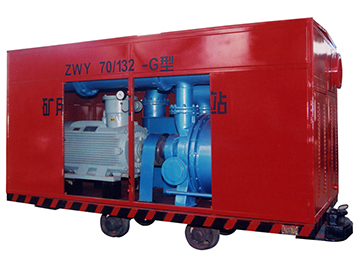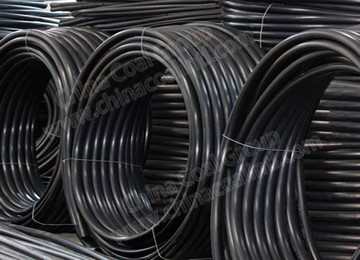
Product Application of Coal Mine Use One-Shot Thermoplastic Gas Drainage Hose
Coupling hose for gas drainage in coal mine is taking PVC (polythylene) as main material, with spiral steel frame with one-step molding technology; it is used for flexible connection between negative pressure gas drainage pipeline and device under the well of coal mine, which has solved the problem of gas tightness for connection between negative pressure gas drainage pipeline and device, and it is applicable to the connection between gas drainage pipeline and gas main pipeline of this coal seam.
Model and specification Of Coal Mine Use One-Shot Thermoplastic Gas Drainage Hose
PVCGR-KW (- 0.097)/ φ25, φ32, φ40, φ44, φ50, φ63, φ75, φ90, φ110
For example: PVCGR-KW (- 0.097)/32 refers to coupling hose for gas drainage in coal minethat nominal pressure is -0.097MPa and nominal internal diameter is 32mm.
Characteristics and explanation of Coal Mine Use One-Shot Thermoplastic Gas Drainage Hose
1. The coupling hose using steel frame supporting has a certain strength and hardness; negative pressure resistance is -0.097MPa, which can be kept for 100 hours without partial absorption and damage, so it can meet the requirement of negative pressure drainage under the well.
2. The bending and scalability is high, it can keep away from barrier effectively under complex condition under the well.
3. This product has excellent flame retardant and antistatic performance, and the special material used on surface can prevent scratch from poignant articles.
4. It has good acid and alkali resistant performance, which can’t be corroded by gas, liquid and other medium with strong corrosion easily.
It is applicable to flexible connection for various models of gas drainage pipes.
Methane gas occurs naturally in coal mines and is a natural by-product of mining. In the history of coal mining methane explosions have caused more loss of life than any other factor.1 4. Increasing coal extraction rates often result in higher rates of methane emissions. However in modern mining, sustainable coal production should not be limited by a mine’s inability to prevent gas concentrations from exceeding statutory safe limits, nor compromised by uncontrolled gas-related incidents that endanger life. Investment in effective gas drainage can ensure that mines meet production targets legally and safely. 5. Neither New Zealand’s mining legislation nor MinEx Health and Safety Council (MinEx) guidelines specifically address the practice of methane drainage. 6. In February 2010 the United Nations Economic Commission for Europe published a best practice guidance on methane drainage,2 and the following overview is sourced primarily from this.
Photos of Coal Mine Use One-Shot Thermoplastic Gas Drainage Hose

















